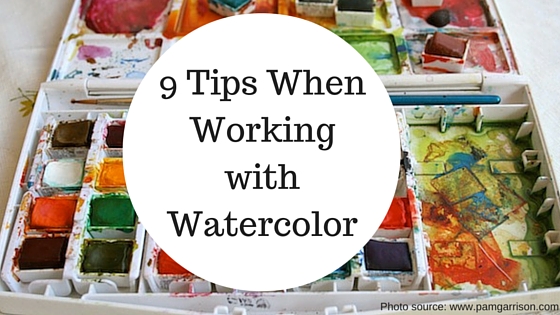Watercolor is a fantastic medium for art students. Aside from it being easily available to source, it's easy for students to learn about color mixing and paint application using watercolor.
Pay attention to our tips below and make sure to bring these learnings in your art classes! Or better yet, share them with your friends and classmates!
Use a portable set of watercolor paints
Have three to four paint brushes
Start with soft synthetic brushes. These are easily available in bookstores and are less expensive than the ideal soft brushes for watercolor made of sable.
Experiment on the shape and size of the brush you will use too as these are purely personal preferences. Although there are tons of shapes and sizes you can choose from, make sure you have at least two large flat brushes for laying a wash and at least two small ones for making fine details on your work.
Use watercolor paper
300-pound paper is by far the thickest watercolor paper and can absorb water without the frustrating buckling. 140-pound paper is commonly used by students and artists, but it can be easily stretched to adjust to your painting style and the amount of water you are using. 90-pound paper is way too thin for watercolor, but is a great size for watercolor painting practice.
When shopping for your watercolor paper, always check for absorbency and the weight. It can be a frustrating process to see your art warping or drying unevenly when the wrong paper is used.
Always work with a palette
Extra tip: Make sure there are plenty of space in between the colors you are mixing so it won't bleed into one another.
Have clean water and scratch papers at hand
Scratch papers will allow you to test out your colors first before applying them on your watercolor paper. Make sure to let your test colors dry first on the paper to gauge if it is a fit to the shade you have in mind or not.
Visualize your composition so you know where to place your highlights
And beyond visualizing what your artwork is going to look like, work from a sketch first. You can create a sketch with ghostly strokes of your pencil. This way, you can still manage to paint directly on top of the outlines. Watercolor is translucent so you can be sure it can hide your light pencil marks.
Have your materials all with you before starting
Make sure everything is set up before starting. Assemble your watercolor paper, brushes, pencil, palette, paint set, water for cleaning, towel for drying the brush and your scratch papers.
Another tip of advice too is to always mix paint more than you think you will need. Especially in an art class where a teacher is there to tell you where you need to apply some touchups, it can be challenging to try and replicate the exact color combination you previously made.
Use a masking fluid
Use it to block out areas on your paper that you don't want to be painted on. Simply apply your wash and allow it to dry before rubbing it off gently from your paper. Don't let your worries and mistakes ruin your water-coloring experience!
And finally, enjoy!
Learn the beautiful art of water-coloring here at our art studios located in Marikina or 500 Shaw Zentrum! Check out our rates and schedules of art classes and get in touch with Teacher Aubrey directly for inquiries at 0917-8784766. Learn more about the Art Smart Program too at this page.

 RSS Feed
RSS Feed
